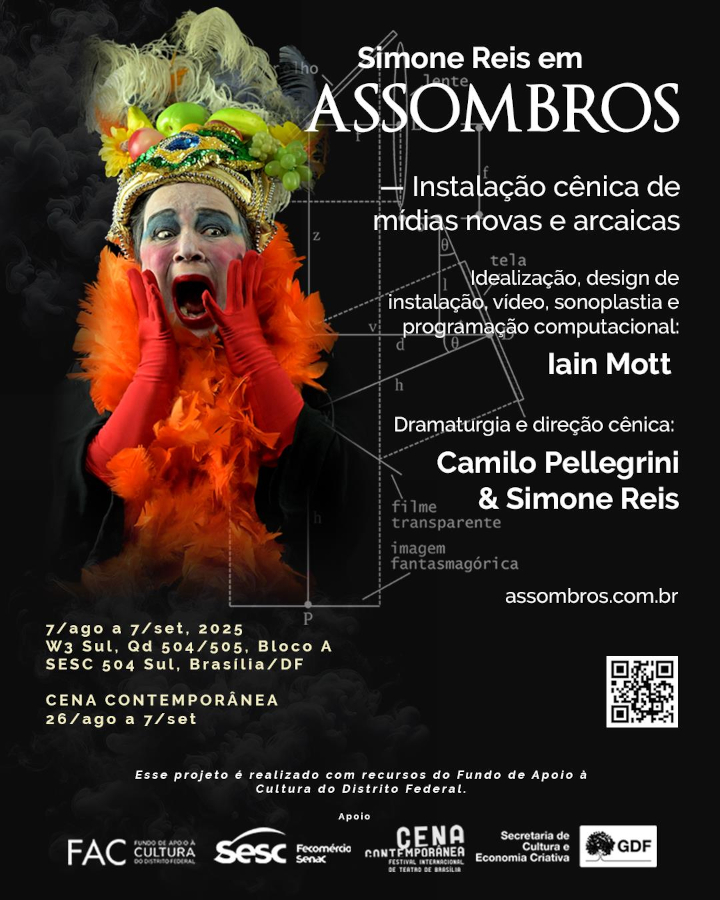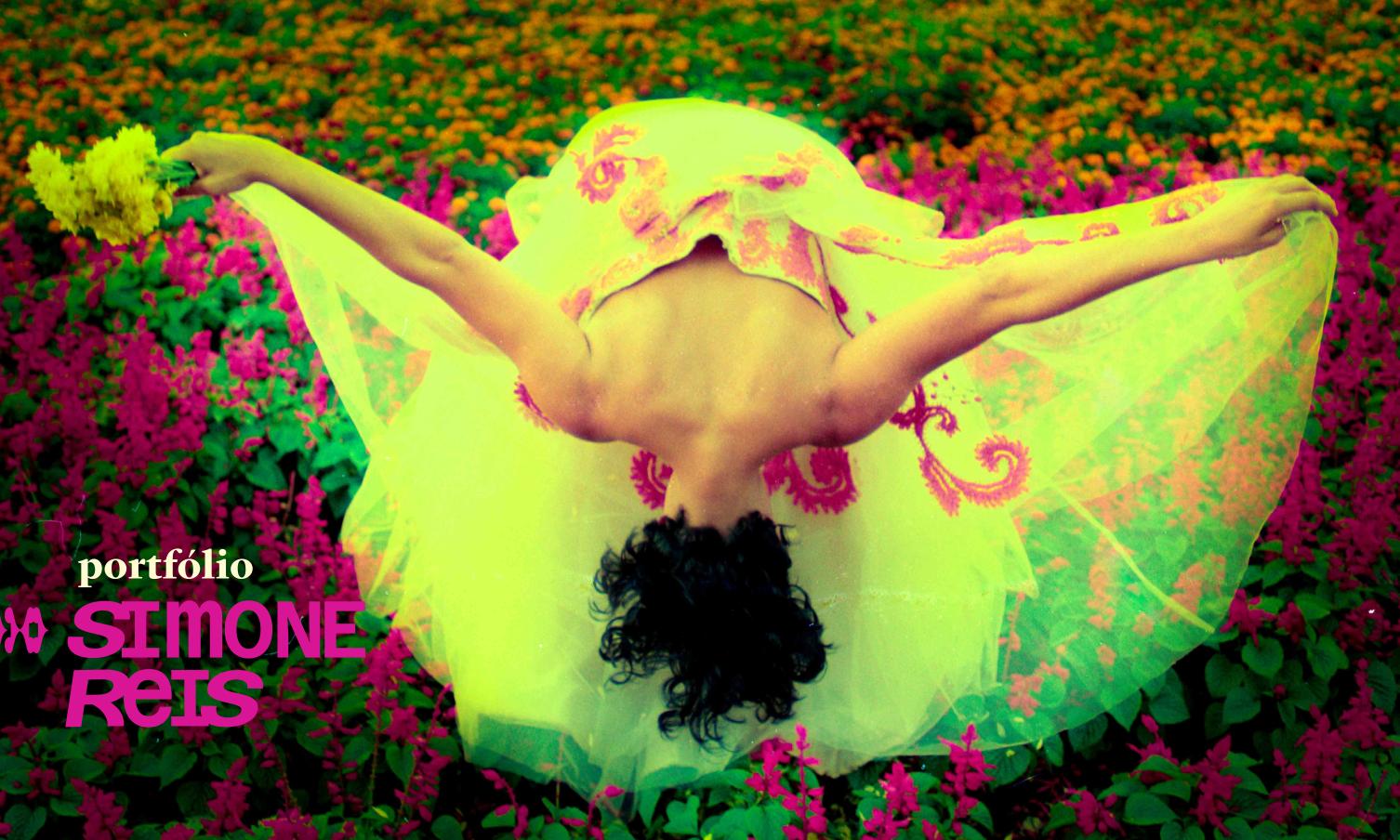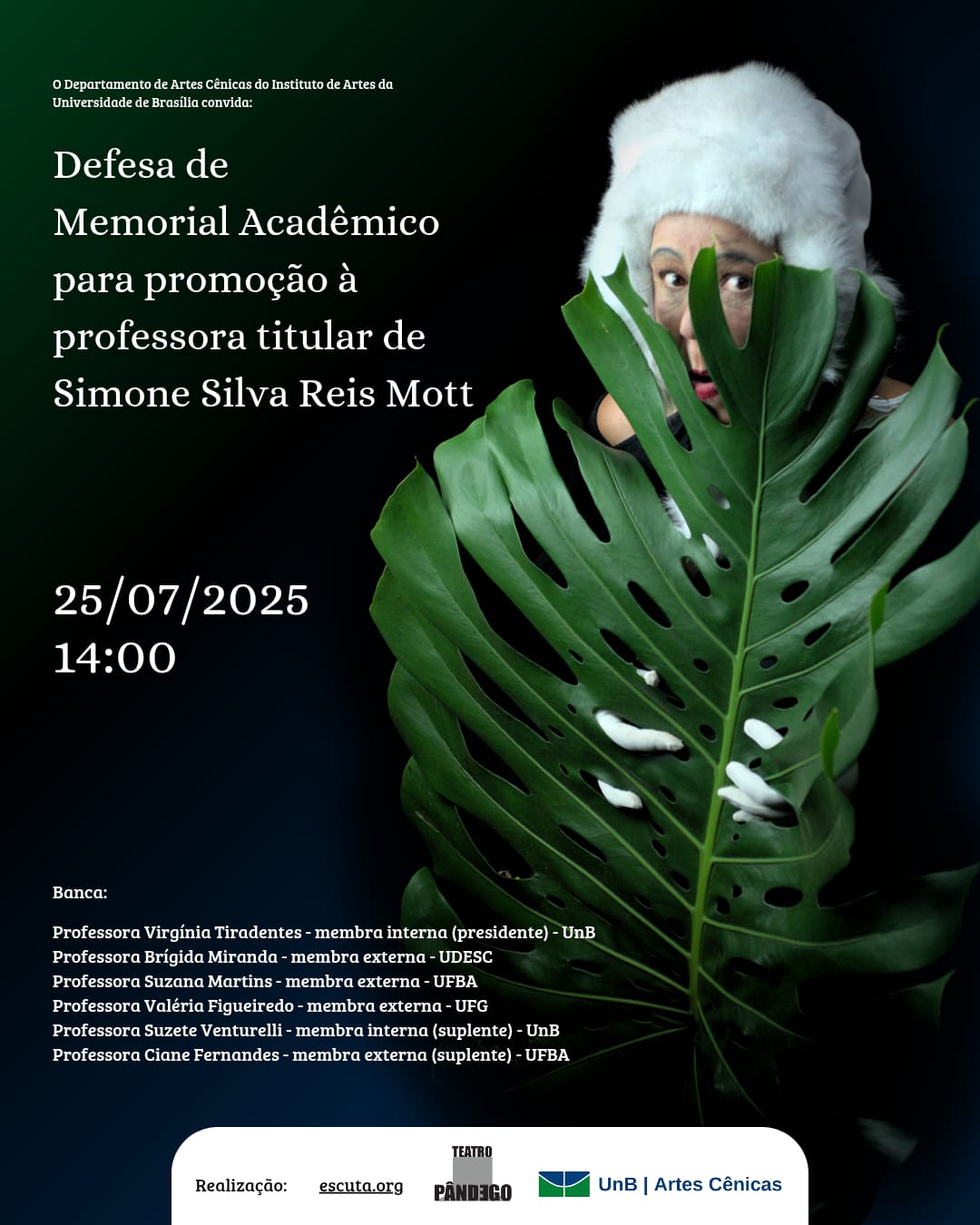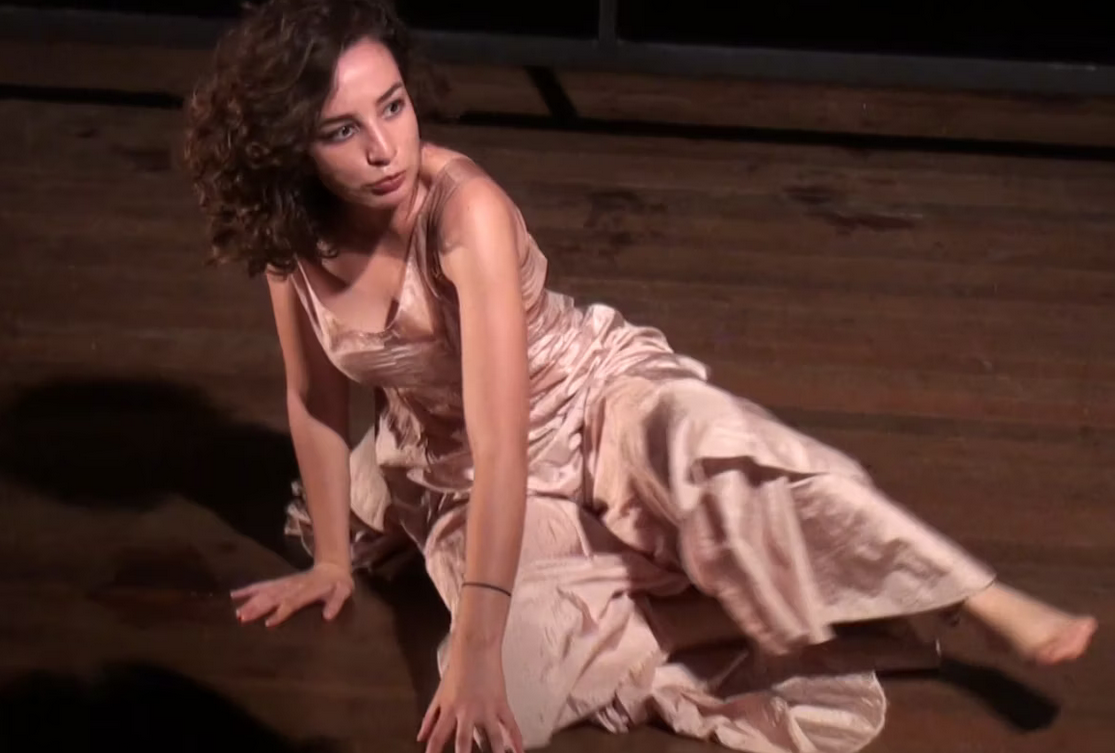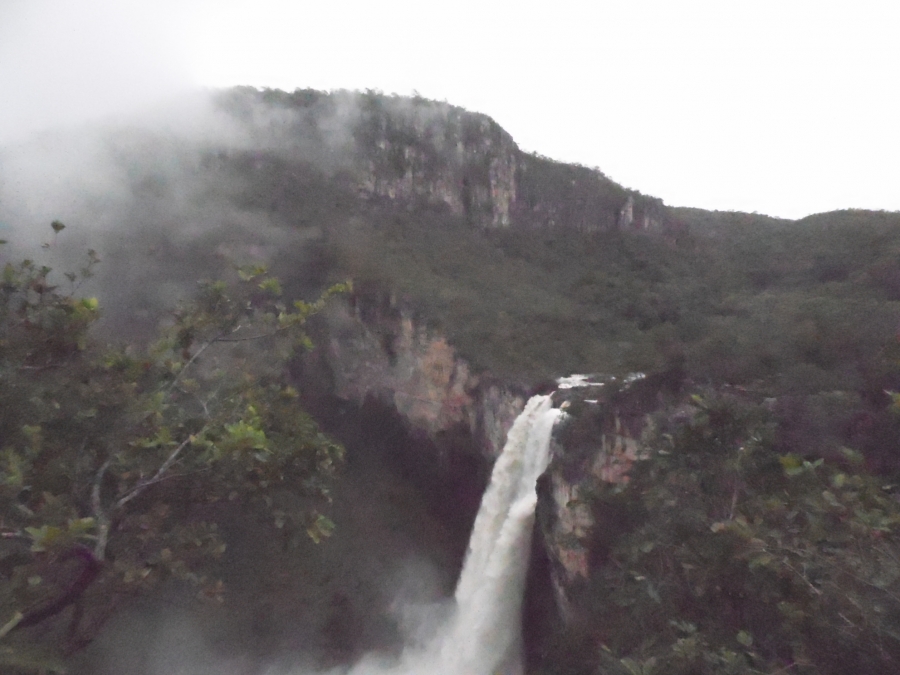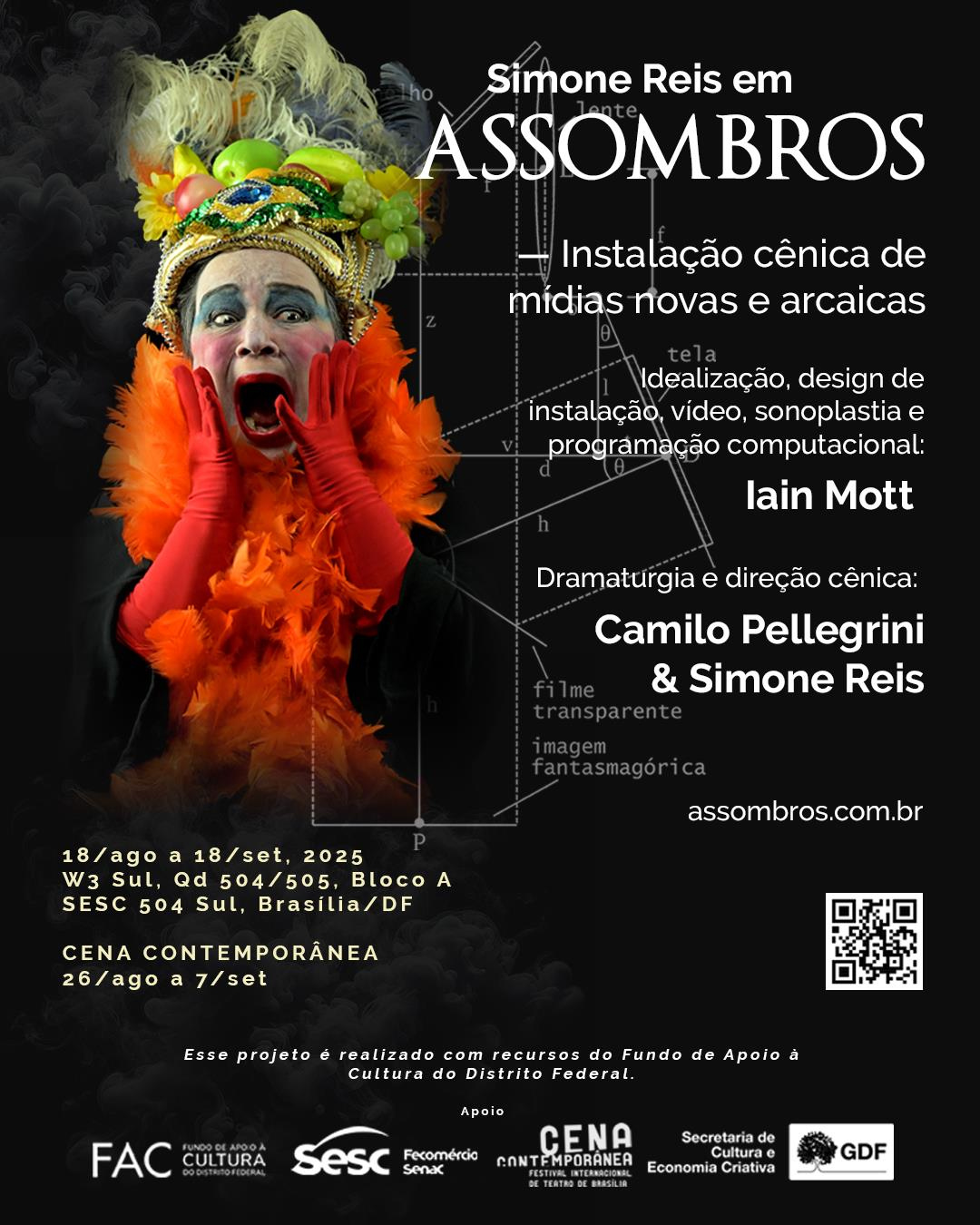* Best translated as "Hauntings". Like the word haunting,
"assombro" has two, albeit slightly different, meanings:
something that causes horror but also
something admirable or marvellous.
Interactive Experience of Three Artistic Languages
Assombros is the result of collaborative work by three artists, whose expressive languages were brought together to provide visitors/spectators with the experience of a unique and surprising interactive encounter.
Integration of Visual, Scenic and Sound Arts
The proposal of the installation exhibition Assombros seeks to integrate visual, scenic and sound arts. Actress and performer Simone Reis performs in short scenes, lasting between four and five minutes each, based on scripts conceived and developed by her and playwright/script writer Camilo Pellegrini, who also acts as stage director. These were subsequently recorded using advanced audiovisual technology resources created by new media artist Iain Mott.
Optical Boxes: New and Archaic Media
Iain Mott designed and built the optical boxes. Semi-pyramidal in shape, impeccably white and aseptic, scenographically aligned, they evoke mortuary urns. They each have a circular window, like a porthole, that allows the spectator to see what happens inside. The engineering with which Mott conceived the boxes is surprising. They blend curious optical systems created in past centuries with contemporary sound and visual resources, resulting in the meeting of apparently disparate technologies which Iain calls "new and archaic media."
Pepper's Ghost Technology and Ambisonic Sound
First, Mott borrowed the configuration of viewing cabinets, the 17th-century Boîte d'Optique, which were constructed from an arrangement of lenses, mirrors, and colored two-dimensional static images, enhanced with small scenic elements that created the illusion of perspective, depth, and three-dimensionality. This format was combined with a theatrical illusion from 19th-century London and Paris stages, Professor Pepper's Ghost. Modernized with digital video, characters are projected within scenographies in each box, creating an immersive experience that amalgamates historical techniques with contemporary resources. He then projected videographic images of Simone Reis's performances, sound-designed through the "Mosca" software, that he developed, an advanced sound resource, "ambisonic" whose construction, roughly speaking, arranges audio channels in 360 degrees to provide an immersive auditory experience, making sound appear to come from all directions around the listener. This sonic and optical contraption makes the interior of each of the five boxes function as a scenographic environment, the setting of a miniaturized virtual and technological stage, occupied by recordings of the sketches.
Autofictional Narratives and Anton Chekhov
In the scripts, synthesis and economy of images and words predominate. These are short scenes, whose fictional or autofictional thematic narratives agglutinate reminiscences of individual or collective memories, mixed with excerpts of dialogue from the archetypal female characters Arkadina, an established actress, and Nina, a young aspiring actress, from the play The Seagull by Russian Anton Chekhov (1860/1904) or from the contemporary version of Nina, revisited by Romanian-French dramaturg, poet and journalist Matéi Visniec.
Immersive Visual and Auditory Performance
In each of the five texts, Simone interprets (or, perhaps more appropriately, "performs") characters apparently bizarre in their normality. The staging provokes the visual and auditory senses: in sonic terms, the fragmented text, the carefully chosen cut phrases, or the loose, floating words, mixed or replicated with ambisonic sounds and melodies resonate not only in the scenic space of the box and headphones, but in the unique imaginary space of the spectator. Regarding the visual aspect, the images are exuberant: the cadaverous makeup, the costume composed of translucent veils, feathers, pompoms, flowers, fans, bouquets, cheap plastic garlands of vibrant colors, provide an almost kaleidoscopic richness of indecipherable images and signs, or open to the most possible or impossible readings.
Fusion of Contemporary Materials and Technologies
The mini-spectacles created by Iain Mott, Camilo Pellegrini and Simone Reis inside the optical boxes fuse materials, technologies and genres and establish a fluid and delicate game, dissolving boundaries, shuffling documents of reality and scene and not refusing to dialogue with shadows, words and phantoms. Butoh and TikTok, tragedy and farce, discomfort and laughter, instant and eternity, divas and ectoplasms – finally, these and so many other opposites, added to the nuances between some and others of them, are what the spectator will certainly encounter in Assombros.
Text: Gladstone Menezes
Cast & Crew
Concept, performer/actress: Simone Reis
Concept, installation and systems design, sound design, diretor of photography and videos, computer programming, photography, graphic design and cenography: Iain Mott
Playwright e theatrical direction: Camilo Pellegrini e Simone Reis
Poetry: Simone Reis
Artistic direction and production: Iain Mott e Simone Reis
Costumes: Simone Reis
Costume consultant: Cyntia Carla
Make-up: Simone Reis
Executive direction and administrative coordination: Robson Castro (Cia Inexistente) e Marconi Valadares (Quanta Produções)
Production secretary: Silvana Viana (Sankofa Produções)
Exhibition setup, promotional artwork, project documetary video: Bruca Teixeira
Social Media: Vitor Borysow
Press Relations: Rodrigo Machado (Território Cultural Assessoria de Comunicação)
Funding
Fundo de Apoio à Cultura da Secretária de Estado de Cultura do Distrito Federal (FAC-DF).
Thank you:
Davi Reis Mott
Gisel Carriconde Azevedo
Gladstone Menezes
Jean-Michaël Celerier
Jim Sosnin
Marc Raszewski
Marcela Hollanda
Mila Petrillo
Phil Jones
Robson Castro
Thibaud Keller
Yuri Fidelis
Materials
MDF, glass, acrylic, plaster, foam, objects and assorted materials.
Electronic hardware
Micro-computers Raspberry Pi 4, customised lighting controler (IRLZ34N mosfet based), 12V RGB LED strips, 12V LED mini spotlights, AMOLED screens, Arduino Nanos, buttons and potentiometers.
Software
Arch Linux, liblo (adapted), pigpiod, OSSIA Score, Mosca, Ardour, DaVinci Resolve 19, Apache II, Android-Kiosk Browser, Automate, among others.
Languages
Shell scripts, SuperCollider, C, p5.js, PHP, HTML.

